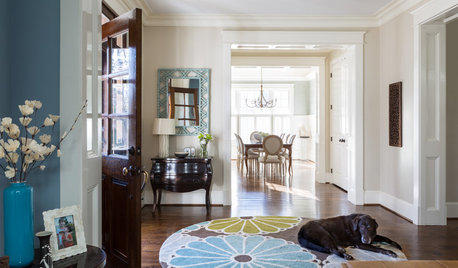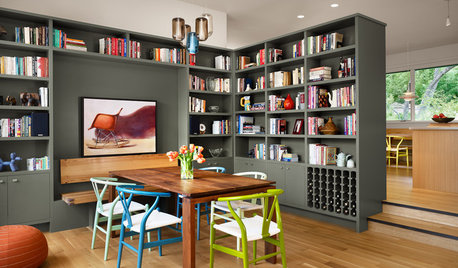Getting Started (Newbie)
MLavore
10 years ago
Related Stories

GARDENING GUIDESSeeds or Seedlings? How to Get Your Garden Started
Growing delicious herbs and vegetables starts with knowing your goals and when you want to plant
Full Story
GARDENING GUIDES6 Steps to Get a Garden Off to a Glowing Start
Grow a lush, balanced garden from an empty patch of yard or neglected landscape spot with these easy-to-follow guidelines
Full Story
TRADITIONAL HOMESHouzz Tour: Family Gets a Fresh Start in a Happy New Home
Decorating her house from scratch spurs a big career change for this designer
Full Story
GARDENING GUIDESGet a Head Start on Planning Your Garden Even if It’s Snowing
Reviewing what you grew last year now will pay off when it’s time to head outside
Full Story
HOUZZ TOURSHouzz Tour: A Texas Home Gets a Healthy, Fresh Start
Mold eradication was just the beginning for this Austin family's home on a creek bed — toxins of all kinds now don't make it past the door
Full Story
HOUSEPLANTSHow to Grow Orchids Indoors
Orchids are the exotic aristocrats of the flower world and can make themselves comfortable in almost any home
Full Story
GREAT HOME PROJECTSConsidering Wallpaper? Here's How to Get Started
New project for a new year: Give your room a whole new look with the color, pattern and texture of a wall covering
Full Story
COLORWant More Color in Your Home? Here’s How to Get Started
Lose your fear of dabbling in new hues with these expert words of advice
Full Story
MOST POPULAR10 Things to Ask Your Contractor Before You Start Your Project
Ask these questions before signing with a contractor for better communication and fewer surprises along the way
Full Story
FARM YOUR YARD6 Things to Know Before You Start Growing Your Own Food
It takes time and practice, but growing edibles in the suburbs or city is possible with smart prep and patience
Full StoryMore Discussions







Ernie
Loveplants2 8b Virginia Beach, Virginia
Related Professionals
Manorville Landscape Architects & Landscape Designers · North New Hyde Park Landscape Architects & Landscape Designers · Palm Springs Landscape Architects & Landscape Designers · Fairhope Landscape Contractors · Wailuku Landscape Contractors · Wallingford Landscape Contractors · Mesquite Solar Energy Systems · North Tustin Solar Energy Systems · West Hartford Solar Energy Systems · Phelan Window Contractors · San Luis Obispo Window Contractors · Tamarac Window Contractors · Glenpool Fence Contractors · Irvine Fence Contractors · West Covina Fence Contractorsseysonn
oxboy555
Ernie
greenman28 NorCal 7b/8a
tapla (mid-Michigan, USDA z5b-6a)